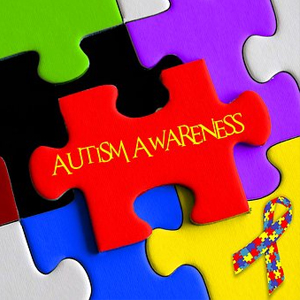
The Journal of Pediatric, Maternal & Family Health published a report on December 3, 2018, titled, “Autism & Chiropractic: A Selective Review of Literature.” The objective of the report was, “To evaluate current research on chiropractic in the management of children with a diagnosis of autism.”

The Diagnostic and Statistical Manual of Mental Disorders 5th Edition, known as the DSM-5 or DSM-V, was changed in 2013 to include several disorders under the umbrella of Autism Spectrum Disorder (ASD). According to the National Institute of Mental Health, “Autism spectrum disorder (ASD) is a developmental disorder that affects communication and behavior. Although autism can be diagnosed at any age, it is said to be a ‘developmental disorder’ because symptoms generally appear in the first two years of life.”
The authors of this report described the criteria needed for the diagnosis of autism. “The presence of two of the following four behaviors is a strong indication of a positive diagnosis of autism: 1) extreme attachment to routines and patterns and resistance to changes in routines; 2) repetitive speech or movements; 3) intense and restrictive interests; and/or 4) difficulty integrating sensory information or strong seeking or avoiding behavior or sensory stimuli.”
In reviewing existing literature on chiropractic and autism, the authors found 11 studies on the subject. The studies involved a variety of chiropractic techniques and all resulted in a variety of positive results.
These 11 studies involved a total of 205 children who had been diagnosed with autism and in one study, related problems such as developmental delay syndromes. Eight of the studies were case studies which followed the cases of individual children who had been diagnosed with autism and where helped by chiropractic. Most of the studies utilized a standardized test called the Autism Treatment Evaluation Checklist (ATEC), to document the improvement of the children while under chiropractic.
The common thread of the studies that were reviewed was that all the subjects were under chiropractic care for the correction of vertebral subluxations. In most of these studies, the focus of that correction was at the upper cervical area involving the top bone in the spine known as the atlas. Several of the studies specifically mentioned that they were not treating autism but were evaluating how the correction of subluxations affected the patients who were suffering with autism.
The Association of Chiropractic Colleges defines the practice of chiropractic as it relates to subluxation by saying, “Chiropractic is concerned with the preservation and restoration of health, and focuses particular attention on the subluxation. A subluxation is a complex of functional and/or structural and/or pathological articular changes that compromise neural integrity and may influence organ system function and general health.”
In the reports conclusion the authors wrote, “Based on the papers that point to the upper cervical area of the spine for evaluation and correction, attention to this area may be a good source for initial conservative treatment for those who present with developmental dysfunctional disorders along the autism spectrum.”
